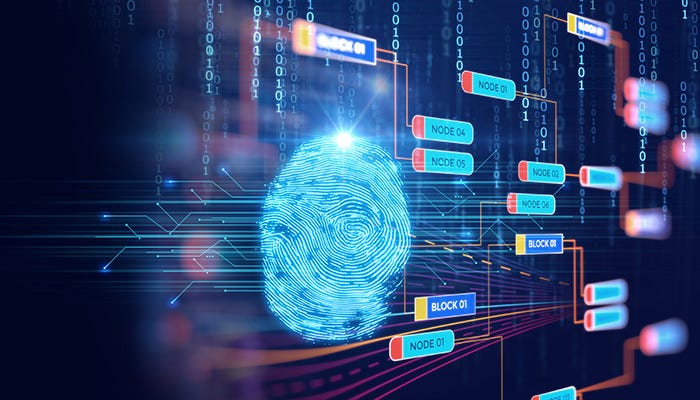Biometrics is a hot topic in the field of security and authentication. They provide a way to authenticate a person’s identity using their unique physical or behavioral characteristics, such as fingerprints, iris scans, and facial recognition. With the rise of technology and the growing need for secure access to sensitive information, biometrics has become an increasingly popular form of multi-factor authentication.
In the past, multi-factor authentication relied heavily on knowledge-based factors, such as passwords and security questions. However, these methods are becoming less effective as they can be easily guessed, stolen, or forgotten. Biometrics, on the other hand, provide a unique and irrefutable form of authentication that cannot be lost, stolen, or forgotten.
One of the biggest advantages of biometrics is its convenience. Unlike traditional methods of authentication, biometrics do not require a user to remember multiple usernames, passwords, and security questions. Instead, the user simply has to present their biometric information, such as their fingerprint or face, to be authenticated. This eliminates the need for users to constantly change their passwords and ensures that they can easily access their information without any hassle.
Another advantage of biometrics is its security. As biometric data is unique to each individual, it provides a high level of security compared to knowledge-based methods. Furthermore, biometric data is encrypted and stored securely, making it nearly impossible for hackers to access or manipulate it.
Biometrics are also being used in industries beyond security and authentication, such as healthcare, finance, and law enforcement. In healthcare, biometrics are used to verify patients and ensure that they receive the correct treatment. In finance, biometrics are used to verify customers and prevent fraud. And in law enforcement, biometrics are used to identify suspects and match them with criminal records.

Some examples of biometric-based multi-factor authentication include:
- Fingerprint recognition: Many smartphones and laptops now come with a built-in fingerprint sensor, which can be used to unlock the device and access secure applications.
- Facial recognition: Facial recognition technology is being used in various industries, such as banking and government, to verify the identity of individuals.
- Voice recognition: Voice recognition can be used for secure authentication, particularly for individuals with disabilities or for people who need to access secure information on the go.
- Iris recognition: Iris recognition uses unique patterns in a person’s iris to identify them. It is a fast and secure method of authentication and is being used in various industries, including border control and secure government facilities.
- Behavioral biometrics: Behavioral biometrics use patterns of behavior, such as typing speed and rhythm, to identify individuals. This technology is used to detect fraud and unauthorized access to secure systems.
These biometric technologies are helping to enhance the security of multi-factor authentication and make it easier for individuals to access secure information.
5 Reasons to Make Biometrics Part of Your Multi-factor Authentication Strategy
1. Minimizing User Frustration
Traditional multi-factor authentication methods can slow down the login process and make it even more cumbersome for users. By implementing face recognition with passive liveness detection, you can achieve a near-perfect level of accuracy with virtually no friction. The process is as simple as taking a quick selfie and often happens automatically in a split second, making it imperceptible to the user.
Additionally, voice biometrics provide a hands-free, low-effort authentication option that can be combined with voice commands for enhanced security or to offer users a choice based on their environment.
Using enterprise-grade biometrics, separate from the native biometrics on a mobile device, allows for the device to still be used as a “possession” factor in the authentication process. This results in a highly secure, passwordless user experience without adding any extra hassle
2. Combating Social Engineering and Reducing Account Takeovers
Biometric authentication provides stronger security compared to knowledge-based authentication, which is highly susceptible to social engineering attacks. During the COVID-19 pandemic, phishing websites have seen a 350 percent increase, according to PCMag. In addition to phishing attacks that trick users into revealing passwords and account information, hackers also utilize personal information obtained online or on the dark web to reset passwords or trick contact center agents into resetting them. Information used to answer “secret questions,” such as birthplace or last known address, is not as secure as many believe. Hackers also exploit social media quizzes and chain posts to gather additional information.
Biometrics are more effective in preventing fraud as they are inherently linked to the user. Even if a user is locked out of their account or is using a new device, their biometric remains a reliable factor for re-authentication, providing an extra layer of security compared to knowledge-based authentication.
3. Clean up the password hygiene problem
Studies show that the average user has between 70 to 80 accounts with passwords, and a Mastercard and University of Oxford study found that 21 percent of users forget their passwords after two weeks and 25 percent forget a password at least once a day. This leads to widespread password reuse, which can have devastating consequences. Verizon reports that 80 percent of data breaches are caused by compromised, weak, or reused passwords.
Poor password habits not only affect users, but also come with a cost for organizations. Gartner estimates that 20 to 50 percent of all IT help desk calls are for password reset assistance, each with an estimated cost of $40 to $50 per call. Furthermore, password reuse and sharing in the workplace can create significant cyber threats, especially when access to administrative or operational accounts is compromised.
By implementing an authentication factor that cannot be lost, forgotten, or shared, you can close security gaps that result in data breaches, while reducing help desk expenses and user frustration.
4. Enhance Fraud Detection
Passwords can be easily hacked, and personal information used in knowledge-based authentication is readily available online. Additionally, tactics like SIM swapping allow fraudsters to intercept one-time passcodes that are meant to secure accounts. When successful, fraud can go unnoticed for extended periods of time.
When it comes to biometric authentication, criminals may use recorded or synthesized voices, printed photos, video replays, and 2D or 3D masks to trick the system into thinking it is the real user. Liveness detection technology is designed to protect against these biometric spoofing attacks in real-time, catching fraudsters in the act. Additionally, a passive approach to facial liveness maintains a frictionless user experience.
5. Enhance Security with the Combination of Biometrics
By incorporating an additional biometric factor into the authentication process, security can be significantly strengthened in high-risk situations with minimal impact on the user experience. For instance, fusing voice biometrics and facial recognition results in a 100 times stronger security than using facial recognition alone. The addition of voice and facial liveness makes the authentication process nearly unbreachable. Although this combination is not considered multi-factor authentication, it can still be combined with other factors, such as the user’s device, to meet the criteria for Strong Customer Authentication.
According to security experts and organizations, such as NIST, using multi-factor authentication is highly recommended when protecting sensitive information, such as financial or health records. Additionally, even if a breach occurs in everyday accounts like email, two-factor authentication can help prevent the domino effect and protect a wider range of accounts.
Despite the benefits of two-factor authentication, a study by Ponemon Institute found that 67 percent of respondents do not use it in their personal lives and 55 percent do not use it at work. This may be due to a lack of education or reluctance to add time and effort to the login process. However, with increasing awareness and the introduction of biometric authentication, users can now strengthen security while reducing effort.
Biometrics are revolutionizing multi-factor authentication by providing a convenient and secure way to authenticate a person’s identity. With the continued development of technology, it is likely that biometrics will play an even bigger role in the future of authentication and security. By providing a unique and irrefutable form of authentication, biometrics ensure that sensitive information is protected and that only authorized individuals have access to it.



